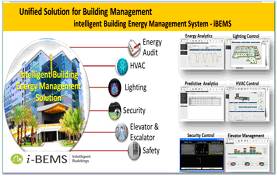
Cities make for 31% of India?s total population and contribute to over 60% of India?s GDP. It is projected that urban India will contribute almost 75% of the national GDP in the next 15 years. Smart cities will form an important part of India?s plans for development and sustainable growth and improved quality of life for all.
A smart city is developed by integrating numerous smart solutions designed for specific applications. Integration of all these solutions provides invaluable data for monitoring and planning future cities. The applications are endless. Let?s consider a couple of scenarios. For instance, you may not have to wait for buses or trains because you can know their exact location, estimated time of arrival and seat availability. Such a solution would see an increase in public transport usage, and the data thus generated would enable efficient planning of India?s transport system ? something that?s been high on the government?s agenda for a long time.
Imagine smart telemedicine solutions that can save lives-smart devices mounted in ambulances and automobiles that can check patient?s health status and link it to a network of hospitals for lifesaving support from doctors during emergencies, thereby ensuring necessary help is either ready or on its way.
Everyday Amenities Get Smarter
Smart Buildings: A smart city is expected to leave a very small carbon footprint by virtue of its smart infrastructure, which constitutes almost 50% of the city?s workflow. IBEMS (integrated building energy management solutions) gain significance in this context. The figure on top illustrates a net zero enabling solution blueprint supporting various architectures from commercial space of industrial plants to the residential space of buildings. It also includes airports, hospitals, and pharmaceutical facilities. An IBEMS solution helps lower energy bills as well as the maintenance cost of these buildings, while extending the life of assets.
Smart Healthcare: One of the many recent breakthroughs in smart healthcare is a solution developed for Android devices that uses the IoT (Internet of Things) platform. The device collects patients data in an ambulance which in turn can be accessed from anywhere via the internet. The solution provides high quality home care for elderly, disabled and lifestyle disease patients. There is also a radio frequency-based wearable device to send mobile alerts in case of any emergency.
Smart Water Management: Water systems are important from the point of not only the city?s water reserves but also its energy consumption. A smart water management system monitors the flow, pressure and distribution of the entire water supply and is able to interact with other systems of the city?s infrastructure.
Smart Lighting: Smart luminaire solutions help in reducing the overall electricity consumption in buildings, factories, and major street lighting systems by interfacing with IBEMS and a customized model developed using predictive analytics to optimize the ?On? time and reduce power consumption.
Smart Grid: Distribution companies can make significant savings on maintenance costs with solutions that provide, for instance, a smart meter design, an accurate load forecasting model with interactive visualization for utilities, successful transformer health monitoring for predicting the health of assets as well as their faults and remaining life.
Other Smart Solutions: Other solutions include smart security solutions comprising of IP cameras, patented video analytics and image processing. Connected, configurable, scalable and smarter systems in a smart city can improve operational and manpower efficiency to achieve the goal of a connected smart world.
Read Keshab Panda’s full story at the link below:
Source: voicendata.com
